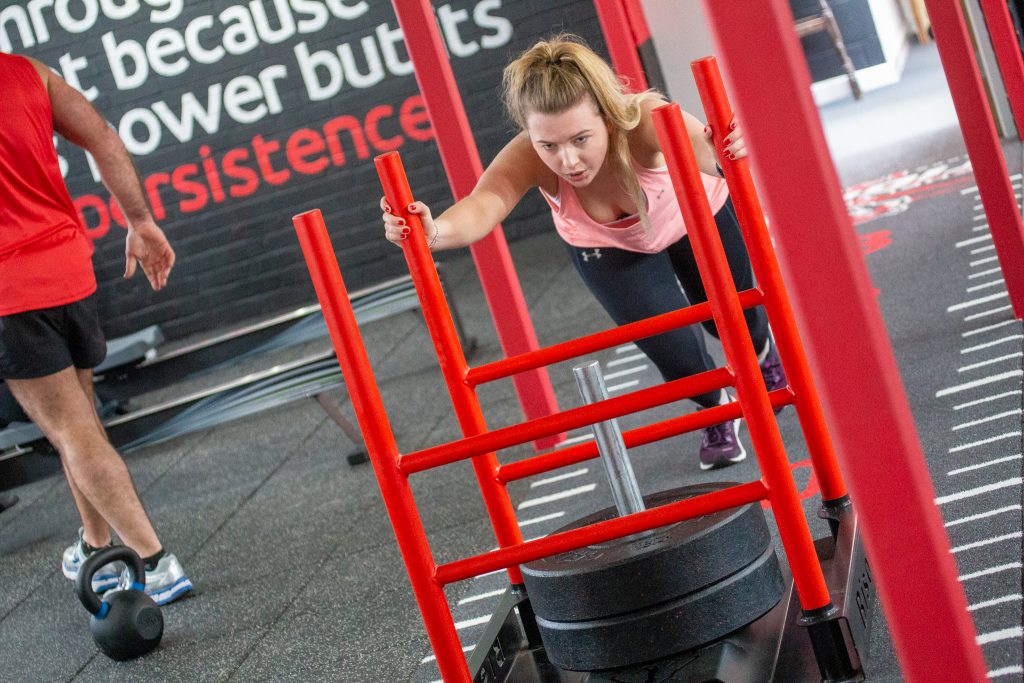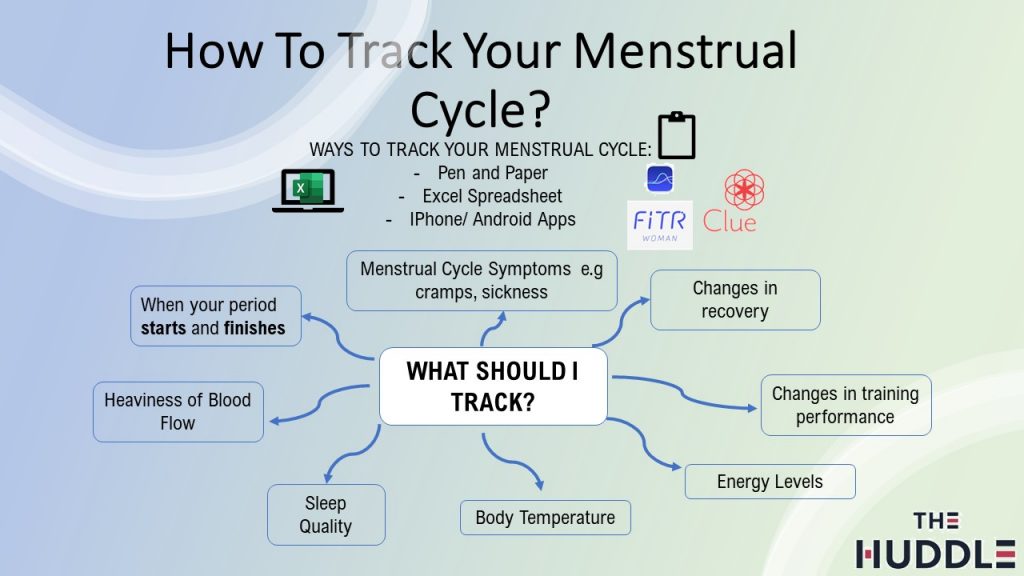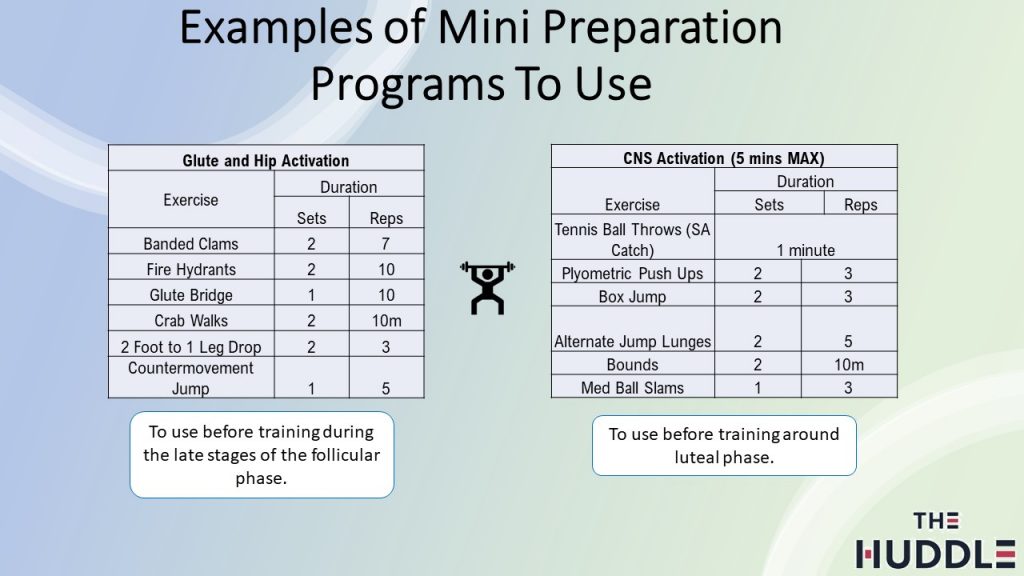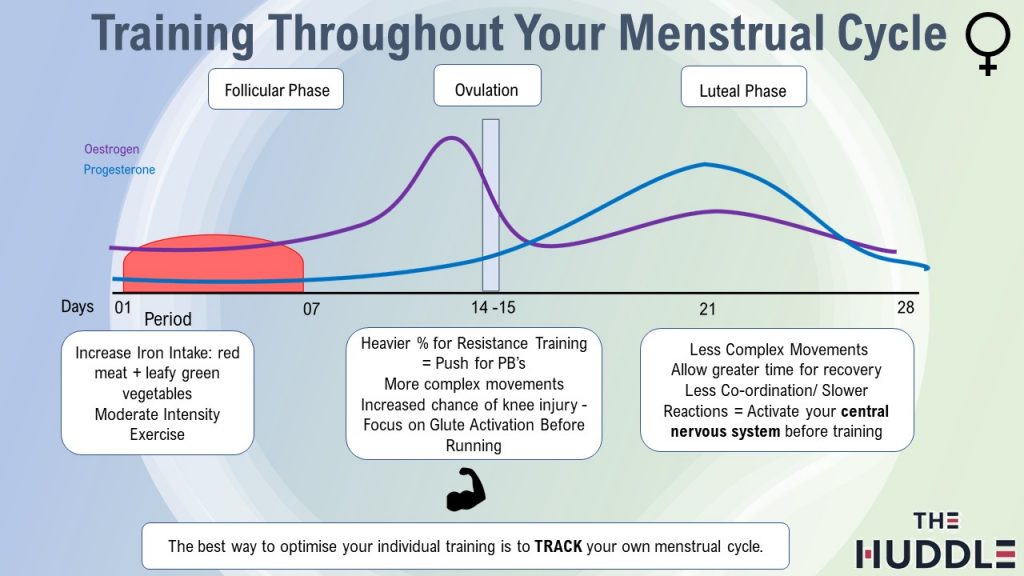
Training Throughout The Menstrual Cycle
Throughout the menstrual cycle, some women can notice changes in their training, performance, and recovery. These changes can be attributed to the fluctuations in the female hormones – oestrogen and progesterone. Usually, the menstrual cycle and its hormones are seen to have a negative impact on training, but by taking the time to understand your menstrual cycle, tracking your cycle, and adjusting your training can have overall positive benefits.
What happens throughout the Menstrual Cycle?

The menstrual cycle usually lasts between 21- 35 days and is split into three phases:
- Menstrual (bleeding) Phase
- Late Follicular Phase (Ovulation)
- Luteal Phase
The Menstrual (Bleeding) Phase is when oestrogen and progesterone levels are low but due to your ‘period’ you still might be experience cramps, tiredness and low moods. During this phase, when it comes to performance, even if you do not feel like exercising it might be beneficial to you! Low level activities such as yoga, stretching or Pilates can help alleviate some of the symptoms associated with your ‘period’. Nutrition is also important, with the increased blood loss, it is important to keep your iron levels high. Therefore, red meat or leafy green vegetables will help improve fatigue levels during this phase.
The main message for this phase of your cycle is to do what is comfortable for your body and adapt training where necessary.
The Late Follicular Phase occurs when the level of oestrogen rises and peaks just before ovulation. During this phase, the scientific research suggests this is a great time to focus on strength training to help develop muscle mass and gain a greater adaptation. This also coincides with an improved mood, increased energy, and potentially faster recovery. All these factors should encourage you to push yourself in training, put an extra 5kg on the bar or go for that extra set. However, it is important to consider when doing any high-speed running exercise or change of direction movements to make sure you have properly warmed up. Some research suggests that during this time oestrogen creates ligament and tendon laxity which can lead to ACL (anterior cruciate ligament) injuries.
The Luteal Phase occurs when both oestrogen and progesterone levels are high. During this phase progesterone can slow down your central nervous system resulting in poor coordination and slow reactions. It is important to ‘wake up’ your central nervous system with co-ordination drills or jumping activities before you train as well as keeping to your traditional compound movements during training. In terms of recovery, during this phase, progesterone can elongate recovery meaning you need to pay attention to your recovery strategies (nutrition and sleep) as well as adding more rest days between session. At the end of this phase, there is a drop in both hormone levels which can result in you experiencing low moods and pre-period cramps. At this time, the best strategy is to choose the training you enjoy, as exercise increases levels of serotonin (happy molecule) in the body so even going out for a walk can lift your mood.
Tracking Your Menstrual Cycle
The best way to gain a greater understanding of your own menstrual cycle is to track it. By tracking your cycle, it not only allows you to adjust your training and recovery, it also allows you to predict your period so you can be prepared, as well as learn what is normal / not normal for you. It is important to track your cycle for at least 3 months so you can pick up your own cycle length effectively. A great way to start tracking is to simply make note of when your period starts and finishes, this will give you an indication of your cycle. Other areas you can keep track of to give you a more detailed view of your cycle are displayed below. There are several ways you can track your cycle from pen and paper to more advanced apps.



ADD COMMENT
You must be logged in to post a comment.

